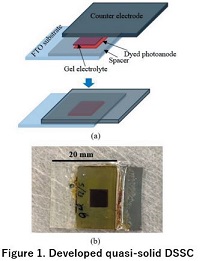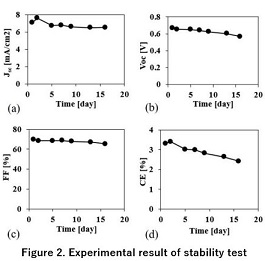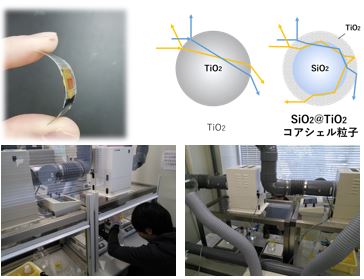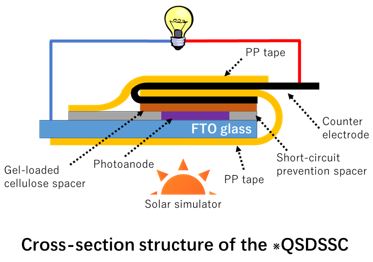Greener energy for the future
SOLAR CELLS
Research overview
Since the invention of dye-sensitized solar cells (DSSCs), they have attracted increasing attention due to the advantages of low-cost fabrication and simple production processes compared with conventional silicon and thin-film solar cells. Generally, a DSSC consists of three components: a dye-sensitized photoanode, a redox electrolyte, and a counter electrode.
Our research group focuses on developing quasi-solid DSSCs with good stability and high performance. Flexible DSSCs are also studied. Moreover, we have succeeded in synthesizing nickel-doped TiO2 to improve the visible light activity of pure TiO2. Nickel-doped TiO2 has been used in the fabrication of the photoanode for DSSCs and has shown higher conversion efficiency.
Our research group focuses on developing quasi-solid DSSCs with good stability and high performance. Flexible DSSCs are also studied. Moreover, we have succeeded in synthesizing nickel-doped TiO2 to improve the visible light activity of pure TiO2. Nickel-doped TiO2 has been used in the fabrication of the photoanode for DSSCs and has shown higher conversion efficiency.
Current research topics
1. Quasi-solid DSSCs: Developing stable quasi-solid DSSCs using gel electrolyte and organic dyes


(“Enhancing the efficiency of PMMA-based quasi-solid electrolyte dye-sensitized solar cells by ozone treatment of TiO2 thin films,” DT Nguyen, Y Kurokawa, R Fujimoto, and K Taguchi, Journal of the Japan Society of Applied Electromagnetics and Mechanics, JSAEM, 27(1), 97–101, 2019.)
2. Developing the photoanode and counter electrode for flexible DSSCs

3. Doping metal to TiO2 to improve the performance of the photoanode

(“Enhancing DSSC Photoanode Performance by Using Ni-Doped TiO2 to Fabricate Scattering Layers,” D-T Nguyen, Y Kurokawa, and K Taguchi, Journal of Electronic Materials, 49, 2578–2583, 2020.)


(“Enhancing the efficiency of PMMA-based quasi-solid electrolyte dye-sensitized solar cells by ozone treatment of TiO2 thin films,” DT Nguyen, Y Kurokawa, R Fujimoto, and K Taguchi, Journal of the Japan Society of Applied Electromagnetics and Mechanics, JSAEM, 27(1), 97–101, 2019.)
2. Developing the photoanode and counter electrode for flexible DSSCs

3. Doping metal to TiO2 to improve the performance of the photoanode

(“Enhancing DSSC Photoanode Performance by Using Ni-Doped TiO2 to Fabricate Scattering Layers,” D-T Nguyen, Y Kurokawa, and K Taguchi, Journal of Electronic Materials, 49, 2578–2583, 2020.)
